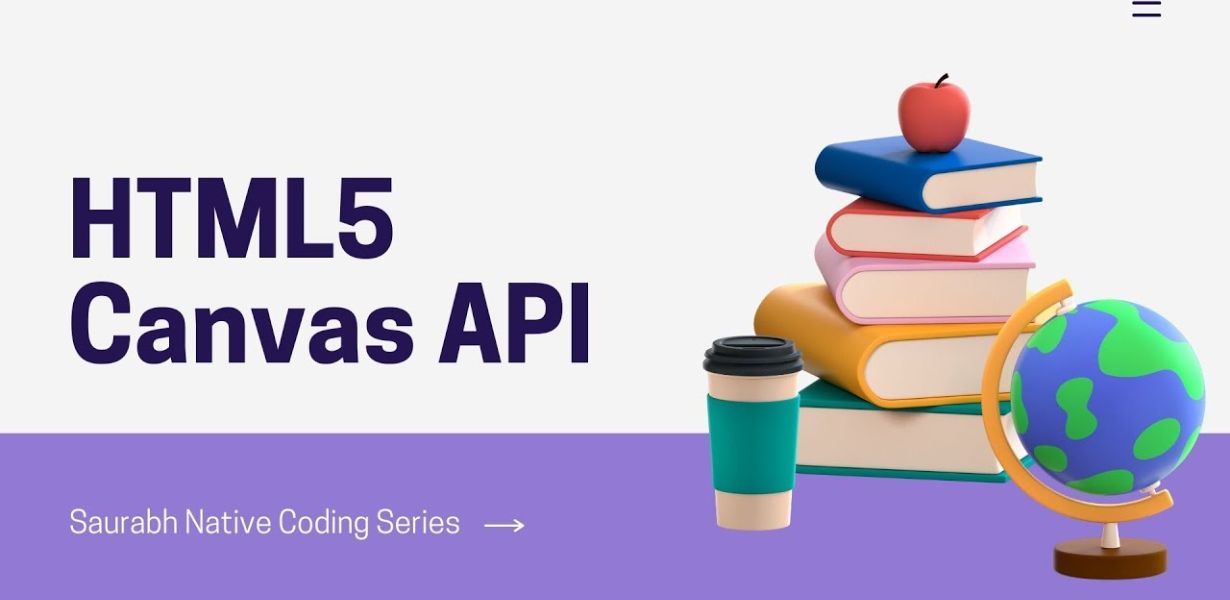
The Future of Immersive Web Experiences: Unveiling the Potential of Canvas API
- Post
- August 8, 2023
- Canvas API, Web APIs, Web Technologies
- 0 Comments
In the ever-evolving landscape of web development, the Canvas API stands as a beacon of innovation, offering a powerful toolkit to create immersive and interactive web experiences. This dynamic technology empowers developers to unleash their creativity and craft visually stunning applications that transcend traditional limitations. In this comprehensive exploration, we delve into the intricacies of the Canvas API, showcasing its capabilities, advantages, and real-world applications. Join us as we embark on a journey to uncover the boundless potential of this remarkable tool.
Understanding the Canvas API: A Glimpse into the Web’s Artistic Canvas
The Canvas API, often referred to as the HTML Canvas API, is a versatile and robust technology that enables developers to render dynamic graphics, animations, and visual elements directly within web browsers. Unlike static images, the Canvas API provides a blank canvas where developers can paint, draw, and animate content using JavaScript. This method grants unparalleled flexibility and control, allowing for the creation of intricate graphics and interactive elements that respond to user interactions.
Embracing Creativity: Unleashing Visual Magic with HTML Canvas
Imagine a world where websites are not just static pages, but living works of art that engage and captivate users. The Canvas API turns this vision into reality. By leveraging JavaScript to manipulate the canvas element, developers can bring drawings, animations, games, and data visualizations to life. The ability to draw shapes, paths, text, images, and even apply filters directly within the browser opens up a realm of creative possibilities that transcend traditional HTML and CSS.
Bridging the Gap: How the Canvas API Enhances User Engagement
In today’s fast-paced digital landscape, user engagement is paramount. The Canvas API offers a powerful tool to create experiences that hold users’ attention and encourage interaction. Whether it’s designing immersive infographics, interactive maps, or visually stunning presentations, the Canvas API’s dynamic capabilities enable developers to build experiences that resonate with users on a deeper level.
Uncharted Territory: Real-World Applications of the Canvas API
The Canvas API’s potential extends far beyond artistic expression. It finds practical use in diverse fields, from education to data visualization and from entertainment to e-commerce. Consider the following applications:
- Data Visualization: Transforming complex data sets into comprehensible visualizations, aiding decision-making and insights.
- Gaming: Developing browser-based games with rich graphics and interactive elements, reducing the need for external plugins.
- Interactive Ads: Crafting captivating advertisements that engage users and drive conversions through interactive content.
- Virtual Tours: Creating immersive virtual tours of real estate properties, museums, and historical sites.
Navigating the Canvas API: Implementing with Precision
As with any powerful tool, mastery requires a deep understanding. The Canvas API’s functionality is harnessed through JavaScript, giving developers the ability to draw, manipulate, and animate content. By familiarizing themselves with methods like and event handling, developers can wield the API effectively and create captivating experiences.
A Glimpse into the Future: Evolving Possibilities of the Canvas API
The journey of the Canvas API is far from over. As web technologies advance, so too will its capabilities. As browser support and performance continue to improve, developers can expect even richer and more seamless experiences. With the rise of WebAssembly, the Canvas API can collaborate with high-performance languages, expanding its potential beyond JavaScript’s limitations.
Final Words
In a digital era that thrives on captivating experiences, the Canvas API emerges as a transformative force, reshaping the way we perceive and interact with web content. Its ability to fuse artistry and functionality opens a new chapter in web development, where innovation knows no bounds. As the Canvas API continues to evolve, the horizon of possibilities expands, promising a future where immersive web experiences become the norm rather than the exception.
Commonly Asked Questions
Q1: What is the Canvas API, and how does it work?
A1: The Canvas API is a technology that enables developers to draw, animate, and create dynamic visual content directly within web browsers using JavaScript. It provides a blank canvas where developers can paint and manipulate graphics, enhancing user engagement.
Q2: What are some practical applications of the Canvas API?
A2: The Canvas API finds applications in various domains, including data visualization, gaming, interactive ads, and virtual tours. It empowers developers to craft captivating content that resonates with users and delivers meaningful experiences.
Q3: How does the Canvas API contribute to user engagement?
A3: By enabling the creation of immersive and interactive content, the Canvas API enhances user engagement. Websites can now offer dynamic graphics, animations, and visual elements that captivate users and encourage interaction.
Q4: What skills are required to utilize the Canvas API effectively?
A4: To leverage the Canvas API, developers need a solid understanding of JavaScript and its core concepts. Familiarity with methods like is essential for effectively implementing the API.
Q5: What does the future hold for the Canvas API?
A5: The Canvas API’s future is promising, with ongoing advancements in browser support and performance. As web technologies evolve, the Canvas API will continue to push boundaries, offering even more sophisticated and seamless web experiences.




